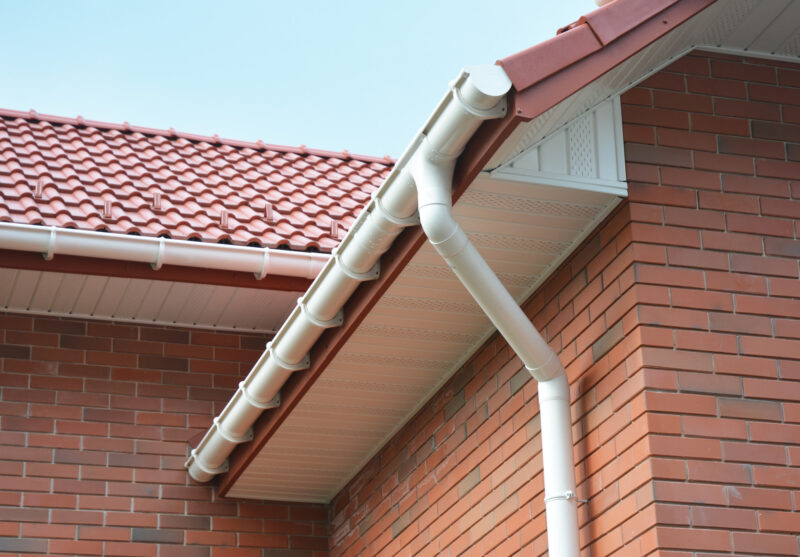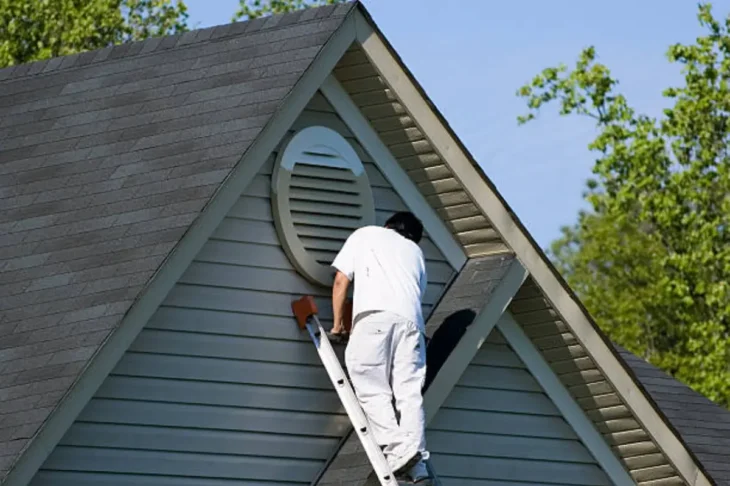
Why Your Gutters Could Be Telling You It’s Time for Roof Repairs
Gutters aren’t usually the first place people check when they’re worried about their roof. But they can be one of the clearest indicators that something’s not right up top. They’re not just there to catch rainwater. Your gutters are constantly collecting clues—bits of roof material, unusual water flow, even how often you’re cleaning them out. If you know what to look for, they can tell you when your roof’s trying to say, “I need help.”
Grit in the Gutter: What That Really Means
If you’ve ever scooped out your gutters and noticed tiny bits that look like sand, don’t shrug it off. That gritty stuff often comes from your shingles, specifically, the protective coating that helps them last. It’s normal to see a small amount, especially on a newer roof. But if you’re seeing more of it than usual? That’s a red flag.
Too much granule loss means your shingles are wearing down fast. They’re more vulnerable to the weather, especially UV rays and heavy rain. And once they lose that layer of protection, leaks aren’t far behind. So if your gutters are filling with roof grit, it might be time to get someone with experience in roof repairs Adelaide up there for a closer look.
Overflow During Rain? It Might Not Be the Gutters’ Fault
When gutters overflow, most people assume they’re clogged, and sometimes they are. But not always. In some cases, the overflow is happening because water is pouring off the roof too fast. That can point to issues with the pitch of your roof or even a breakdown in the roofing material itself. Water might not be flowing the way it’s supposed to, and your gutters are catching the brunt of it.
Another possibility? Sagging or damaged sections of your roof are changing how rain runs off, pushing more water to certain areas than your gutters can handle. If it’s always one side that’s spilling over, take that as a hint.
Gutters Pulling Away from the House
If your gutters are starting to separate from the roofline, don’t just hammer them back in. That gap can signal something bigger is going on. Moisture might be creeping in where it shouldn’t, softening the fascia or causing rot underneath the edge of your roof. Over time, that can weaken the structure and make it harder for your gutters to stay anchored.
It’s not just an issue for the gutters. If the wood behind them is rotting, your roof is already compromised. This kind of damage doesn’t fix itself. The longer it’s left, the more expensive it tends to get.
Consistent Gutter Clogs – A Deeper Problem?
Everyone expects the occasional leaf blockage. But if you’re constantly clearing your gutters and they’re still backing up, that could point to deterioration on the roof.
Debris from cracked shingles, broken tile, or rotting underlayment might be ending up in the gutters more often than you think. In older roofs, the materials start breaking down bit by bit, and those bits don’t just disappear. They end up clogging the system that’s meant to drain water away from your home.
If your roof’s shedding more than it should, the gutters become the first place it shows.
Rust and Water Stains Around the Gutters
Discolouration, rust marks, and dark streaks around the gutter edges are more than just cosmetic. They’re signs of water hanging around longer than it should, which could point to leaks from above. If water isn’t being channelled correctly, it’ll sit, seep, and stain.
Sometimes, that water is coming from inside the roofing system itself, maybe due to lifted flashing, cracked seals, or even hidden holes. Other times, it’s the result of water sneaking behind the gutters because the roofline is no longer tight or flush. Either way, it means your roof’s protective barrier might be compromised.
Don’t Ignore the Signs
If you’re noticing a few of these at the same time, don’t wait for a ceiling stain or a dripping light fixture to confirm it.
- Gutter granules – Show shingles are wearing down
- Overflow during rain – May point to poor roof drainage
- Gutters pulling away – Could signal rot or fascia damage
- Frequent clogs – Might mean roof debris is falling in
- Rust or staining – Hints at water going where it shouldn’t
These signs often work together. Spotting more than one is usually a nudge that your roof’s due for some attention.
What Your Gutters Are Trying to Say
Most people don’t look up until something goes wrong. But your gutters are quietly doing more than collecting rain, they’re offering clues.
Paying attention now can save you the stress of emergency repairs later. A few loose granules, a sagging edge, or overflow during storms might seem small. But they rarely stay small.
It’s about catching problems early, while they’re still manageable. Roof repairs don’t have to be overwhelming if you’re ahead of the curve. And your gutters? They’re giving you a head start.

